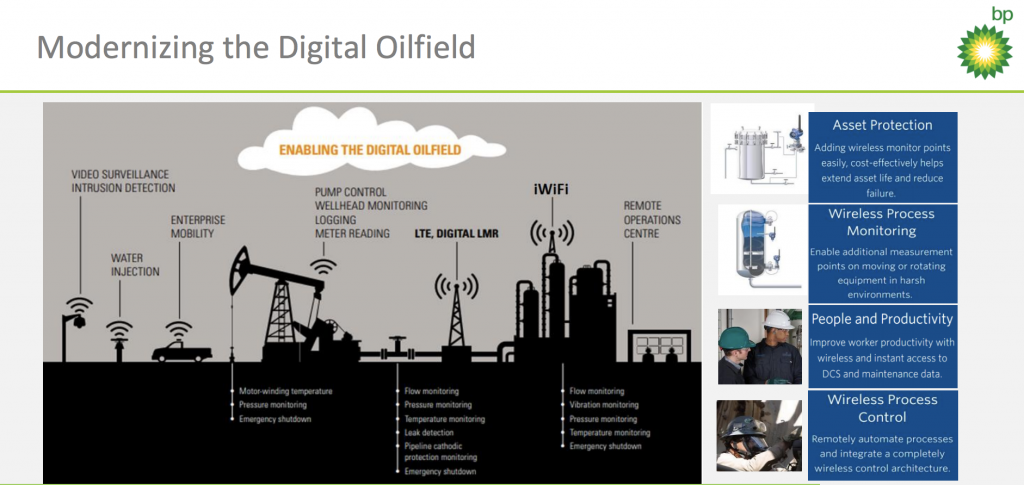Oilfield connectivity and the Cloud
When you think of an offshore oil and gas asset, whether it’s a submarine or a rig installation, you imagine an isolated machine being operated by brave people in a harsh environment. The bravery and harshness is real but the isolation isn’t: the reality today is that these assets are connected to on-shore control centres often via satellite communications. At today’s Oilfield Connectivity conference, hosted by GVF in Aberdeen, we learned about the innovations happening both on- and off-shore in oil and gas, facilitated by satellite communications.
BP, satellite companies and Cloudsoft shared examples of challenges and solutions in the oil and gas industry and several themes emerged:
- Better connectivity between locations breeds innovation that improves safety and cost-optimization.
- The cloud is a key tool to provide modern application delivery and data analytics for near-real time understanding of things like sensor data.
- Slow delivery and inflexible remote components are being replaced by agile deployments and configurable remote units.
Dawn Murray of BP led the keynote and described the wide range of solutions in the field but she stressed that the satellite communications industry needs to improve the speed, agility and cost of their solutions to oil and gas organizations like BP.

One of the panelists pointed out that innovations are happening faster outside of oil and gas in regards to connectivity: a cruise ship will have better connectivity than an oil rig so that the customers can do snap chat from the Bahamas.
Cloudsoft detailed the approach to cloud applications using techniques such as DevOps, backed strongly by BP who use agile methods, and the connectivity options on AWS from the massive global network to secure VPN communications.
The amount of data and speed of data is increasing, BP said they process thousands of gigabytes of data per week across their network. Doing analysis on this data for things like predictive analysis to increase safety is one example. Other ideas are providing augmented reality heads-up displays for remote engineers. Using the cloud to share data to reduce the cost and time of visiting remote locations is definitely a trend in the oil and gas industry.

Industrial IoT was a strong theme and combined with the new Low Earth Orbit (LEO) satellite constellations, the oil and gas industry is primed for more innovation - the question remains: are mature segments like oil and gas and satellite communications able to disrupt themselves, be more agile and move faster?
Beyond the hardware and software discussions, there was also an interesting question about the age of people in the room, with only a few attendees being under thirty years old and with very few women in attendance. Cloudsoft made the point that one way to attract new talent is to share your engineering and innovation prowess via an engineering blog.
There’s a reason that cloud-native organizations like Spotify, Skyscanner and Monzo can attract the best talent: they publicly share their innovations via regular engineering blogs and also their problems via post-mortem blogs. Can oil and gas, and the satellite industry, copy these techniques to increase their own innovation, speed and the talent pool?
Get all of the slides from the event here.